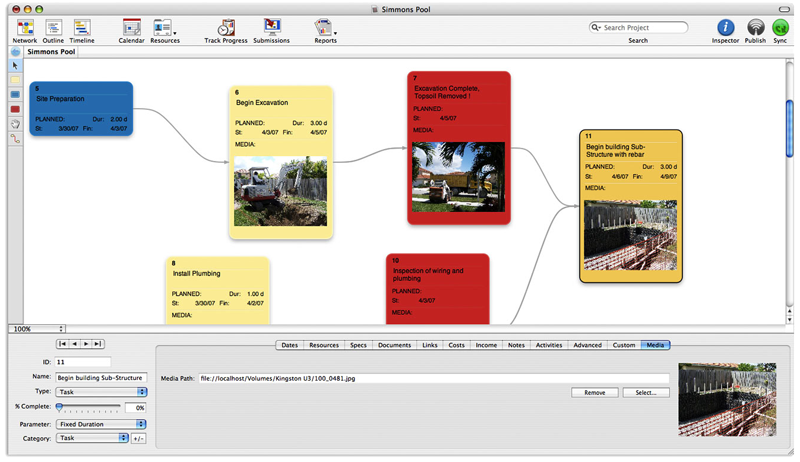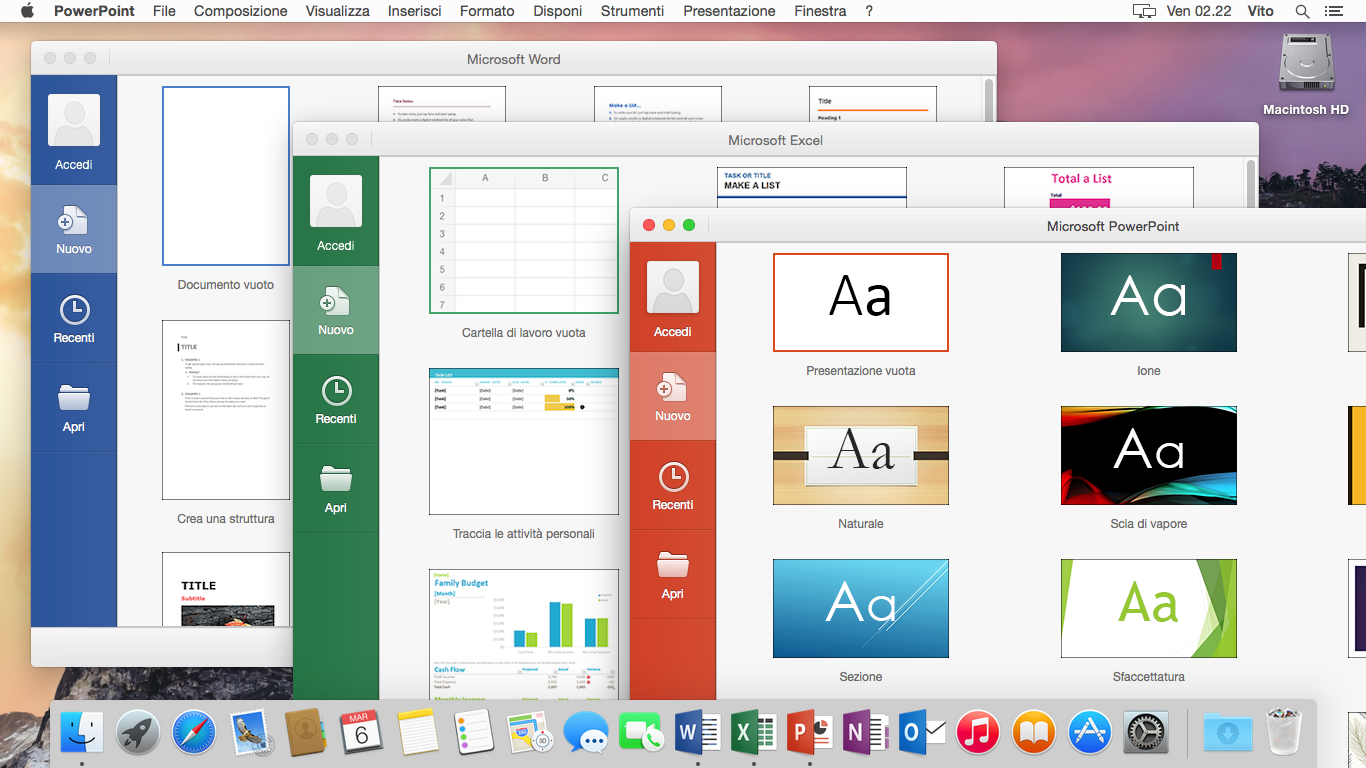Hi,
Can anybody tell me how I can find out the License Key which was used to install Office 2004 for MAC?
I need to uninstall it from an old MAC and re-install it on a new one. We have several copies of Office installed on various machines, and I need to make sure that I am uninstalling and re-installing the correct one!
Microsoft Office 2004 for Mac provides the intuitive, intelligent tools you need to transform your ideas and opportunities into action. Put Office 2004 to work for you, whether you use your Mac. Microsoft Office 2004 for Mac is a productivity suite that combines Word to create rich documents, Excel to develop useful spreadsheets, PowerPoint to design compelling presentations, Entourage to communicate and manage personal information, and Messenger to integrate instant messaging into other tasks. Office 2004 for Mac is a version of Microsoft Office developed for Mac OS X. It is equivalent to Office 2003 for Windows. The software was originally written for PowerPC Macs, so Macs with Intel CPUs must run the program under Mac OS X's Rosetta emulation layer. For this reason, it is not compatible with Mac OS X 10.7 and newer. Office 2004 was replaced by its successor, Microsoft Office. Office 2004 for Mac 11.5.0 Update. The Office 2004 update improves stability and compatibility with documents that were created in Office 2008 for Mac and Office 2007 for Windows. If the Open XML. IOW, you cannot apply an Office 2004 update if Office 2004 isn't installed. Having upgraded your OS you need to upgrade your software accordingly. An upgrade is a newer version/release of the actual software. Office 2011 is the most recent release of Mac Office & will operate on any current version of OS X, 10.5.8 or later.
Open your Spiceworks Dashboard
Click on Inventory
Click on the device in question
Click on Software
Scroll down to Microsoft Office: Our product keys are listed in the appropriate fields through a device scan
If this doesn't work, my bad ;) Mea Culpa. I <3 Windows
Screenshot of Microsoft Word 2004 on an Intel-based Mac in Mac OS X v10.4 'Tiger' through Rosetta | |
| Developer(s) | Microsoft |
|---|---|
| Initial release | May 11, 2004; 16 years ago |
| Stable release | |
| License | |
| Website | microsoft.com/mac/products |

| System requirements | |
|---|---|
| CPU | PowerPC G3 or higher |
| Operating system | Mac OS X v10.2.8 through v10.6.8 |
| RAM | 256 MB |
| Free hard disk space | 450 MB |
Office 2004 for Mac is a version of Microsoft Office developed for Mac OS X. It is equivalent to Office 2003 for Windows. The software was originally written for PowerPC Macs, so Macs with Intel CPUs must run the program under Mac OS X's Rosetta emulation layer. For this reason, it is not compatible with Mac OS X 10.7 and newer.
Office 2004 was replaced by its successor, Microsoft Office 2008 for Mac, which was developed as a universal binary to run natively on Intel Macs. However, Office 2008 did not include support for Visual Basic for Applications, which made Microsoft extend the support period of Office 2004 from October 13, 2009 to January 10, 2012.[3] Microsoft ultimately shipped support for Visual Basic in Microsoft Office 2011 for Mac, which also dropped PowerPC support altogether. Support for Office 2004 ended January 10, 2012.[2]
Editions[edit]
Microsoft Office for Mac 2004 is available in three editions: Standard, Professional, and Student and Teacher. All three editions include Word, Excel, PowerPoint and Entourage. The Professional Edition adds Virtual PC. The Student and Teacher Edition cannot be upgraded, which means when a later version of Office is released, people who purchased the Student and Teacher edition must buy a new package.

Features[edit]
Word 2004[edit]
Microsoft Word is a word processor which possesses a dominant market share in the word processor market. Its proprietary DOC format is considered a de facto standard, although its successive Windows version (Word 2007) uses a new XML-based format called .DOCX, but has the capability of saving and opening the old .DOC format.
The new Office Open XML format was built into the next version of Office for Mac (Office 2008). However, it is also supported on Office 2004 with the help of a free conversion tool available from Microsoft.[4]
Excel 2004[edit]
Microsoft Excel is a spreadsheet program. Like Microsoft Word, it possesses a dominant market share. It was originally a competitor to the dominant Lotus 1-2-3, but it eventually outsold it and became the de facto standard for spreadsheet programs.
Entourage 2004[edit]
Microsoft Entourage is an email application. Its personal information management features include a calendar, address book, task list, note list, and project manager. With Entourage 2004, Microsoft began offering a Project Center, which allows the user to create and organize projects. Information may come from within Entourage or outside the program.


PowerPoint 2004[edit]
Microsoft PowerPoint is a popular presentation program used to create slideshows composed of text, graphics, movies and other objects, which can be displayed on-screen and navigated through by the presenter or printed out on transparencies or slides. It too possesses a dominant market share. Movies, videos, sounds and music, as well as wordart and autoshapes can be added to slideshows.
Virtual PC[edit]
2004 Office For Mac Catalina
Included with Office 2004 for Mac Professional Edition, Microsoft Virtual PC is a hypervisor which emulates Microsoft Windowsoperating systems on Mac OS X which are PowerPC-based. Virtual PC does not work on Intel-based Macs and in August 2006, Microsoft announced it would not be ported to Intel-based Macintoshes, effectively discontinuing the product as PowerPC-based Macintoshes are no longer manufactured.
2004 Office For Mac Windows 7
Criticism[edit]
Images inserted into any Office 2004 application by using either cut and paste or drag and drop result in a file that does not display the inserted graphic when viewed on a Windows machine. Instead, the Windows user is told 'QuickTime and a TIFF (LZW) decompressor are needed to see this picture'. Peter Clark of Geek Boy's Blog presented one solution in December 2004.[5] However, this issue persists in Office 2008.
There is no support for editing right to left and bidirectional languages (such as Arabic, Hebrew, Persian, etc.) in Office 2004. This issue has not been fixed in Office 2008 or 2011 either.[6][7]
See also[edit]
Office 2004 For Mac
References[edit]
- ^'Download Microsoft Office 2004 for Mac 11.6.6 Update'. Download Center. Microsoft. December 13, 2011. Archived from the original on July 5, 2012.
- ^ ab'Microsoft Support Lifecycle'. Support. Microsoft. Retrieved April 28, 2013.
- ^Tedesco, Mike (October 12, 2009). 'Office 2004 Mainstream Support Has Been Extended'. Mactopia. Microsoft. Archived from the original on October 17, 2009. Retrieved October 12, 2009.
- ^'MS11-072: Description of the Open XML File Format Converter for Mac 1.2.1: September 13, 2011'. Support. Microsoft. September 13, 2011.
- ^Clark, Peter (December 6, 2004). 'QuickTime and a TIFF (LZW) decompressor are needed to see this picture'. Geek Boy's Blog. Archived from the original on May 10, 2013. Retrieved October 12, 2009.Alt URL
- ^Heard, Chris (September 27, 2007). 'It's official: no RTL support in Microsoft Office 2008 for Mac'. Higgaion. Archived from the original on October 11, 2007. Retrieved October 12, 2009.
- ^Morgenstern, David (August 8, 2010). 'Microsoft boosts languages, proofing tools in Office 2011 for Mac, Unicode right-to-left support missing'. ZDNet. CBS Interactive. Retrieved April 27, 2013.
2004 Office For Mac Os
